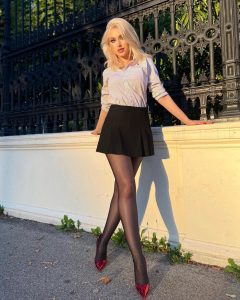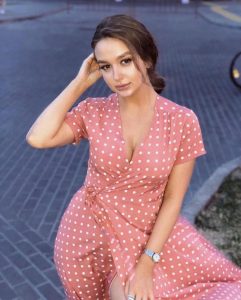Appearance and Personal Style: The Silent Language of Identity
Personal style is far more than just the clothes we wear or the makeup we apply—it’s a deeply rooted expression of who we are. Appearance style forms an integral part of a person’s image, and for women in particular, it can serve as a powerful, multilayered form of communication. It reveals personality traits, emotional states, values, cultural influences, social background, and even intellectual inclinations. In many ways, style is the silent language through which a woman tells her story without ever having to speak a word.
A woman’s appearance is often the first impression she makes, and that impression can be profound. The choices she makes—her clothing, hairstyle, makeup, accessories, colors, and even the way she carries herself—collectively shape how she is perceived by others and how she perceives herself. These choices are rarely random. Whether consciously or unconsciously, a woman crafts her image based on a mixture of personal taste, societal expectations, emotional needs, and aspirational desires.
Style is not just what is seen on the surface; it is a reflection of the inner world. It is the harmony between outward appearance and inner essence. It mirrors mood, beliefs, lifestyle, and self-worth. One woman might choose clean, tailored lines and monochromatic tones because she values order, clarity, and professionalism. Another may prefer flowing dresses, floral prints, and soft colors, expressing her romanticism and gentle spirit. Someone else may mix vintage pieces with bold, modern accessories, signaling creativity, confidence, and a disregard for convention.
Coco Chanel famously said, “Fashion passes, style remains.” These few words hold deep wisdom. Fashion, by nature, is transient. It changes from season to season, influenced by designers, pop culture, media, and economic or political currents. But style—authentic, individual style—is timeless. It is not dictated by the runway, nor by fleeting trends. It is cultivated from within and evolves with a woman’s life journey. A woman can enjoy experimenting with trends, adapting them to fit her personality, but her true style remains uniquely her own—a reflection of her soul.
Style as a Reflection of Identity
Every woman has her own visual identity. Style is the embodiment of this identity in aesthetic form. It reflects how she wants the world to see her—and how she sees herself. In this way, style becomes more than just external beauty; it becomes self-expression, empowerment, and often, transformation.
A woman’s style may shift over time. It may evolve with age, career changes, motherhood, relationships, or personal growth. Sometimes it becomes more minimalist, refined, or bold. At other times, it becomes freer, more colorful, or experimental. These changes are not superficial—they echo deeper transformations in her character, priorities, and worldview.
Interestingly, studies in psychology and sociology show that the way people dress can also influence their behavior and mental state. For instance, wearing structured clothing may increase feelings of competence and control. Bright colors may uplift mood and boost energy. Accessories or details with sentimental value can instill confidence or provide comfort. Thus, style doesn’t just communicate who a woman is—it can also reinforce or elevate who she wants to become.
Major Style Archetypes and Their Meaning
Fashion stylists often classify women’s appearance into distinct archetypal styles. These classifications help decode the message behind certain looks and offer inspiration for cultivating one’s own unique expression. Below are some of the most well-known and enduring style types:
-
Classic Style: Known for timeless elegance, this style includes tailored cuts, neutral palettes, and high-quality materials. It reflects a woman who is poised, sophisticated, and values tradition and order. She seeks refinement, not flashiness.
-
Business/Professional Style: Structured suits, pencil skirts, crisp blouses, and minimal accessories define this look. This woman exudes confidence, competence, and ambition. Her image is carefully polished for leadership and authority.
-
Chanel-Inspired Style: Named after Coco Chanel, this style blends feminine charm with strong character. Tweed jackets, pearls, and simple silhouettes reflect intelligence, grace, and independence. It is the epitome of understated luxury.
-
Romantic Style: Soft fabrics, pastel tones, floral prints, lace, and ruffles dominate this look. The romantic woman is sensitive, dreamy, affectionate, and emotionally expressive. She embraces beauty and gentleness in every detail.
-
Sporty Style: Prioritizing comfort, functionality, and ease, this style includes activewear, sneakers, and relaxed cuts. It’s perfect for energetic, practical women who lead active lives and value health and freedom of movement.
-
Avant-Garde Style: Experimental, bold, and unconventional, this style pushes boundaries and breaks rules. Asymmetry, sharp lines, and abstract forms reflect a highly creative, often intellectual personality who is unafraid to stand out.
-
Folklore/Bohemian Style: Rich in cultural motifs, embroidery, earth tones, and natural fabrics, this style connects to heritage, nature, and spirituality. The bohemian woman values authenticity, freedom, and artistic expression.
-
Fantasy Style: Inspired by myths, fairy tales, or historical eras, this style includes dramatic, imaginative garments that express escapism, storytelling, and whimsy. This woman enjoys the magic of fashion as performance and self-invention.
-
Diffuse Style: A blend of multiple elements, this look defies categorization. It may appear inconsistent but is deeply personal. The woman who embraces this style is complex, versatile, and not bound by fashion rules—she dresses to reflect her changing moods and diverse interests.
-
Glamour Style: Dramatic, polished, and often luxurious, this style involves high heels, makeup, sparkling jewelry, and sleek silhouettes. It reflects confidence, charisma, and a love for being seen and admired.
Style in a Changing World
In today’s world, where identity is fluid and the boundaries between personal and public life are constantly shifting, style has taken on even greater importance. With the rise of social media and digital presence, a woman’s appearance is no longer only noticed in physical spaces but also on screens viewed by global audiences. In such an environment, cultivating a style that is authentic and expressive becomes even more essential.
Moreover, in a society that still places intense scrutiny on women’s appearances, reclaiming style as a personal choice—not a societal obligation—is a powerful act of self-agency. A woman’s style should never be something she feels she must have, but something she chooses to embrace as a creative and empowering force in her life.
Conclusion: The Art of Dressing the Self
In essence, personal style is not about impressing others—it’s about expressing oneself. It is a quiet declaration of independence, a portrait of individuality, and a celebration of the self in all its complexity. Through style, a woman crafts the visual poetry of her life.
Fashion may provide the materials, but it is style that gives them meaning. It is the difference between wearing clothes and wearing yourself. When outward appearance and inner essence come into alignment, the result is not just beauty—it is authenticity, confidence, and radiance that cannot be replicated.
Whether elegant or edgy, subtle or bold, minimal or maximal—your style is your signature. And like any great work of art, it should be wholly, unapologetically your own.























